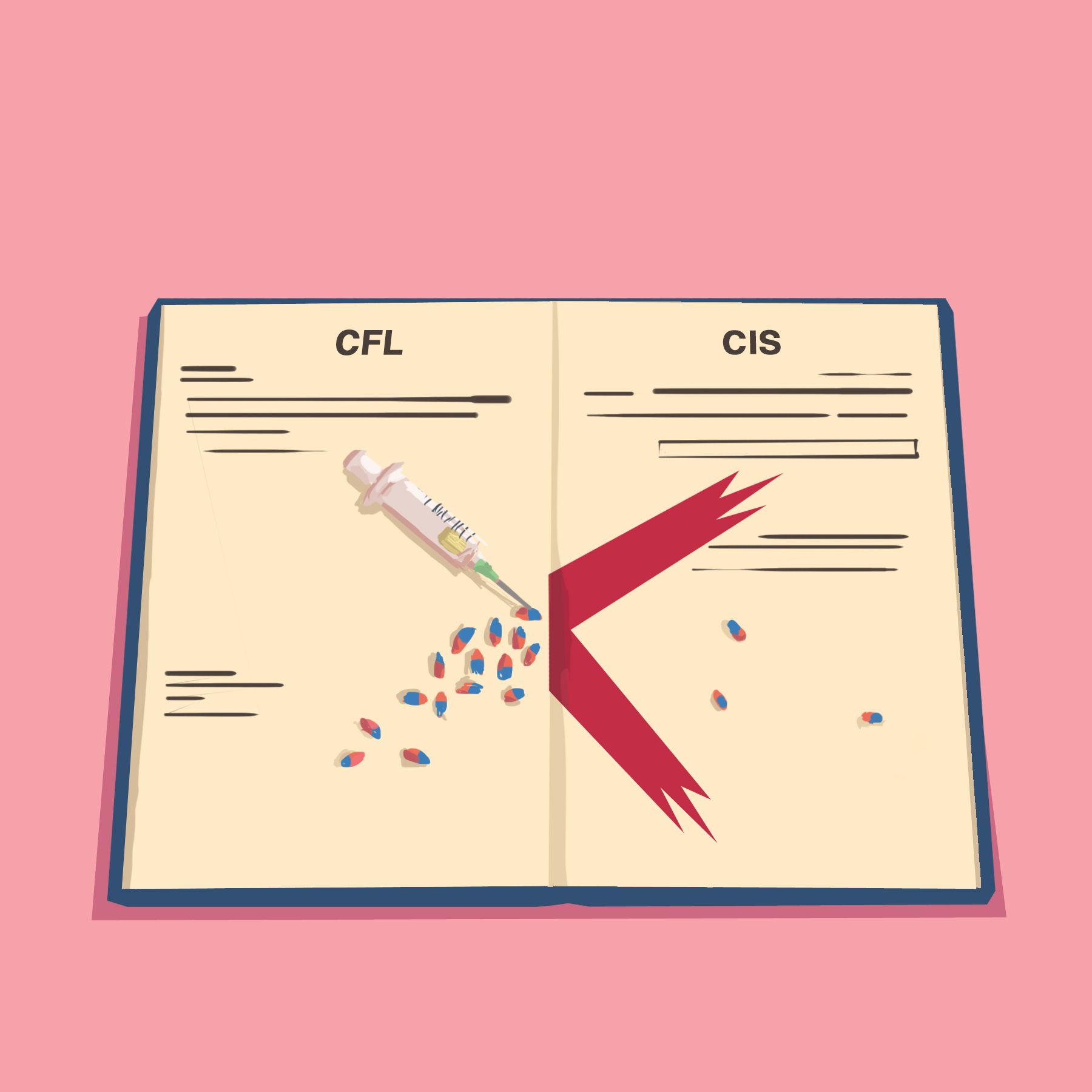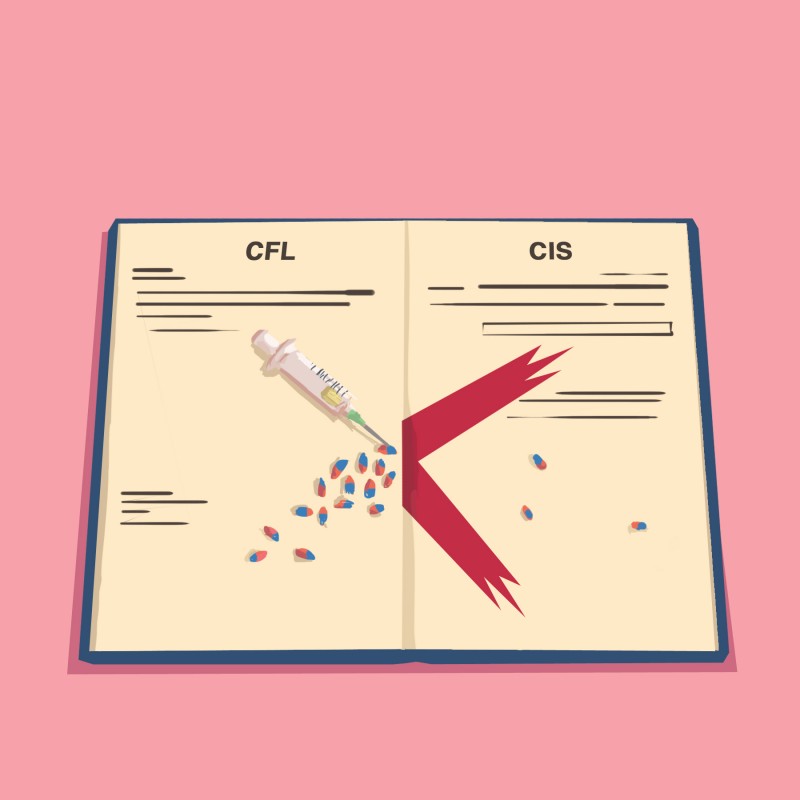Performance drugs still a problem

CFL regulations leave CIS athletes with mixed messages

Every year, more and more football players are slipping through the cracks and turning to performance enhancing drugs.
With the chance of making it professionally on the line, many players have been giving in to temptation and using PEDs to skyrocket their results.
Defensive back Kayin Marchand-Wright, receiver Melvin Abankwah, and linebackers Jonathon Langa and Marvin Golding from the Saint Mary’s University Huskies, as well as Laval Rouge et Or receiver Matthew Norzil, all tested positive for performance enhancing drugs at the CFL draft combine held last March.
All five players were able to report to CFL training camps when they began in June despite testing positive.
The Canadian Interuniversity Sport (CIS) also found nine potential anti-doping infractions by the University of Waterloo football program, leading to a one year suspension of the entire team by the university for a year back in 2010. Warriors receiver Nathan Zettler was also arrested for possession and trafficking anabolic steroids during this time.
Wilfrid Laurier University head coach Michael Faulds stresses the importance of keeping clean from performance enhancing drugs to his players, with the strict testing regulations that the CIS imposes on university football programs.
“Our players are constantly reminded that testers can come by at any point. Four times throughout the year we have to give the CIS players’ updated weightlifting numbers, bench press, squat, anything that we have to test them on for strength,” he said.
“That’s one way we regulate it — make sure our players are always on edge, always sure they know what they are putting in their bodies.”
The Laurier bench boss is also present at every weightlifting session, constantly getting numbers from the strength and conditioning coach, tracking everyone’s progress and looking out for any warning signs.
According to Faulds, even cold remedies that people can get at the store can result in a positive test, so all players are given a full sheet from the coaches in training camp that they have to abide by.
“The fact that it’s at random scares everyone enough that they’re going to be really concerned with what they are putting in their bodies,” he explained.
Faulds is concerned by the lax regulation at the CFL level sending contradicting messages to players looking to turn pro after university.
“The issue we have as head coaches of the CIS is we are undermined by the CFL,” Faulds explained.
“Last year was a perfect example. A player tested positive and was drafted a few days later. This year, all five guys that [tested] positive were in CFL camps. If players are going to see that they are still going to get rewarded even after an infraction, that’s not good messaging.”
Despite the inconsistent lanes of communication between the two organizations, Faulds is confident that reinforcing positive messages and keeping players educated about performance enhancing drugs will deter players from temptation.
“I think the key is constant reminders and properly educating your players to do the right thing, and making sure that they know that you truly do care about it, that you’re concerned about what they are putting in their bodies,” Faulds said.
“Ultimately, there are no cutting corners in this game. It’s the time you put in the weight room that’s really going to pay off.”

